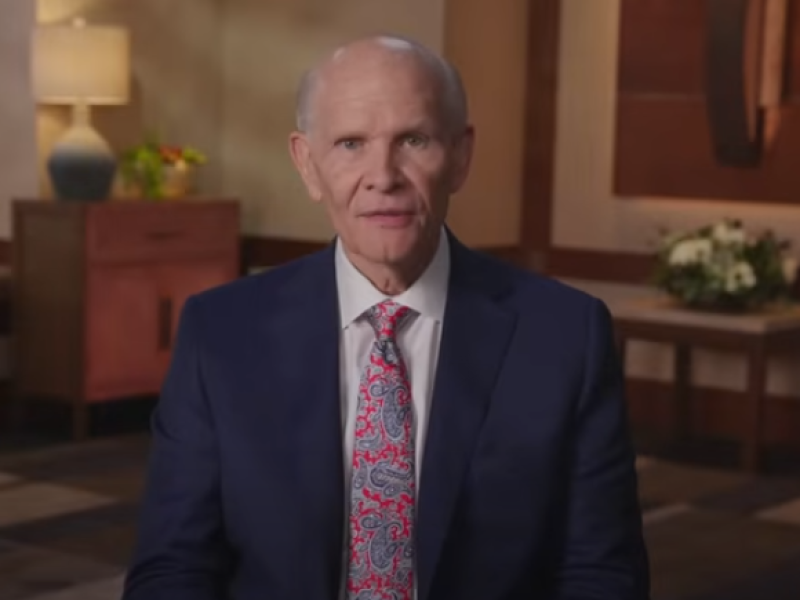We made it to the end of the year studying the Doctrine and Covenants, a book of questions and answers. At the beginning of 2025 we set out to A.S.K. (Always Seeking more Knowledge), so how did you do? Did you feel your relationship with Christ strengthen through receiving answers? We hope so, and we brought on a family of guests today to share some of their favorite Doctrine and Covenants scriptures that have brought them through times of good and times of trial. Happy Holidays from the Sunday on Monday podcast, and we’ll see you again for the Old Testament.
There have been six official proclamations in the 195 year history of the Church of Jesus Christ of Latter-day Saints, and this year is the 30th anniversary of The Family: A Proclamation to the World. On today's episode we are talking with church historians about all six, what they meant for the saints at the time, and what it means when there is a proclamation issued. And even though some are almost 100 years old we will ask what eternal truths can be learned from their words.
In the very back of the Doctrine and Covenants you will find Official Declaration 1 and Official Declaration 2. Todays discussion will talk about what a declaration means and how they set the pattern for continuing revelation. As the ninth Article of Faith says: "We believe that [God] will yet reveal many great and important things pertaining to the Kingdom of God.
This is an episode of jubilation, a real jubilee we are all invited to attend. So what are we celebrating? Doctrine and Covenants sections 137–138 answers that question and reminds us it is a celebration we won’t want to miss. The jubilee has its roots in Old Testament doctrine and has been going on for a very long time.
On June 27, 1844 Joseph Smith and Hyrum Smith were shot in Carthage jail. A new section of the Doctrine and Covenants was added just in time for the 1844 publication including a memoriam to their martyrdom. What is now Section 135 has those words from the prophet’s friends announcing the death as a seal to the testimony of the Book of Mormon and Doctrine and Covenants.
Jesus is coming, look busy could be seen as the theme to Doctrine and Covenants 133. Near the same time that Section 1 was revealed as a preface to the Book of Commandments, Joseph Smith received Section 133 as an appendix. These closing words to the saints are focused on the coming of Christ and what we need to do to prepare.
God’s goal for His children is to see us with Him again. That eternal life is best described in John 17 and Doctrine and Covenants 132 as “knowing” God. This week’s Come, Follow Me lesson teaches sacred truths restored through Joseph Smith that allow us to know God and bring ourselves closer to Him—in this world and the world to come.
The doctrine of baptism for the dead is one of the ways we are welded together with our ancestors. Doctrine and Covenants 125–128 contains letters from Joseph Smith to the saints where his mind was on this eternal topic. And the people of the church reacted immediately to participate with gladness in this ordinance.
Persecution in Missouri led the early saints to the swamplands of Illinois, and over a year had passed since the last recorded revelation from the Lord. Doctrine and Covenants 124 is a message to the free saints making their way in a new community. It contains blueprints for the important buildings their growing town needs, and instructions for their lives.
Elder Renlund first suggests making sure we are doing what God has asked of us and “not something extra that we impose on ourselves.”
1 Min Read
Elder Kearon believes this truth “can console all of us.”
1 Min Read
These resources can help any family dive deeper into the Doctrine and Covenants in 2025.
1 Min Read
What is required for building Zion? The Saints in the early 1830s had land, resources, and plans, but they weren’t aligned in their attitude. In today’s discussion of Doctrine and Covenants 64–66, we learn what the Lord asks of us as we continue their mission to build Zion on the earth. And even though it won’t be just one city, the requirements from God are the same.
In early August 1831, Joseph Smith and other elders of the Church were preparing to return to Kirtland after a short visit to Missouri. The Lord wanted these men to preach the gospel during their trip. Some of the men had no problem with that, but others were hesitant. Doctrine and Covenants 60–63 set the Lord’s expectations and desires for the Saints on their journey home, whether on the road to Ohio or our eventual home with God again.
There are a lot of comforting words you can say to a friend or family member who is going through a hard time. And we can find many reassuring words in the scriptures, too. Our Come, Follow Me study this week in Doctrine and Covenants 58–59 contains a unique phrase for the Saints in Missouri. And no matter what we are going through, we can hope to “lay to heart” these words from God as well.
For Church members in the 1830s, gathering in Ohio and building the city of Zion were spiritual as well as temporal labors. In the revelations recorded in Doctrine and Covenants 51–57, the Lord appointed and instructed people to handle the tasks required for building a new place. He also taught the people about becoming a Zion people, which may have been more difficult than building, printing, or running a store.
Doctrine and Covenants 50 carries an invitation from the Lord that we accept every time we study, listen to a podcast, or go to church: “Let us reason together.” For today’s discussion on sections 49 and 50, we are joined by two educated women who are familiar with reasoning about the scriptures. And their insight will help us all be “edified and rejoice together.”
The early Church didn’t have manuals or study guides—they didn’t even have enough copies of the Book of Mormon to go around. But what they did have was ongoing revelation. Doctrine and Covenants 42–56 deal with organizing the Church better, resolving disputes between members, and combating deception. You could almost say these sections are like the earliest General Handbook for the Church. Sections 46–48 contain doctrine so vital to the organization of Christ’s Church that we still rely on it today.






